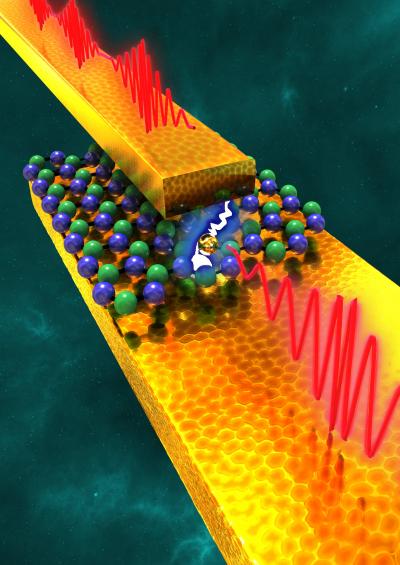Smartphones have switches that perform a number of functions including juggling between different networks and spectrum frequencies–4G, WiFi, LTE, Bluetooth, etc.
Consequently, the current radio-frequency (RF) switches that perform this task are always running, consuming precious processing power and battery life.
Researchers at the University of Texas at Austin and the University of Lille in France, have built a new component that will allow access to the highest 5G frequencies more efficiently.
The switch also increases the battery life of devices and speeds up how quickly users can do things like stream HD media.
Prior research has recorded success on the low end of the 5G spectrum–where speeds are slower but data can travel longer distances.
This is the first switch that can function across the spectrum from the low-end gigahertz frequencies to high-end terahertz frequencies, which could someday be key to the development of 6G. The latter will be able to use higher frequencies than 5G networks and provide substantially higher capacity and much lower latency).
Powerful, speedier switch
The new switches stay off, saving battery life for other processes, unless they are actively helping a device jump between networks. They have also shown the ability to transmit data well above the baseline for 5G-level speeds.
The switch can transmit an HDTV stream at a 100GHz frequency, according to Deji Akinwande, a professor in the Cockrell School of Engineering’s Department of Electrical and Computer Engineering who led the research.
“Radio-frequency (RF) switches are pervasive in military communication, connectivity and radar systems,” said Pani Varanasi, division chief, materials science program at ARO.
“These new switches could provide large performance advantage compared to existing components and can enable longer battery life for mobile communication, and advanced reconfigurable systems.”
The journal Nature Electronics published the research team’s findings. The research was funded by the Army Research Office–an element of the U.S. Army Combat Capabilities Development Command’s Army Research Laboratory.
Energy efficiency critical for 5G
Energy-saving features helps operators build denser networks, meet performance demands and maintain low 5G energy consumption.
In 2015, ICT networks consumed 1.15% of the total electricity grid supply globally and contributed to 0.53% of the global carbon emissions related to energy, according to a joint study by Ericsson Research and network operator Telia.
Applications
The team’s switches use the nanomaterial hexagonal boron nitride–a rapidly emerging nanomaterial from the same family as graphene.
The structure of the switch involves a single layer of boron and nitrogen atoms in a honeycomb pattern sandwiched between a pair of gold electrodes. Hexagonal boron nitride is the thinnest known insulator with a thickness of 0.33 nanometers.
The impact of these switches extends beyond smartphones to satellite systems, smart radios, reconfigurable communications, and the Internet of Things (IoT).
These switches can also be realized on flexible substrates making them suitable for Soldier wearable radios and communication systems that can benefit from the improved energy efficiency for longer battery life with faster data speeds as well as other defense technologies.
“This will be very useful for radio and radar technology,” Akinwande said.
